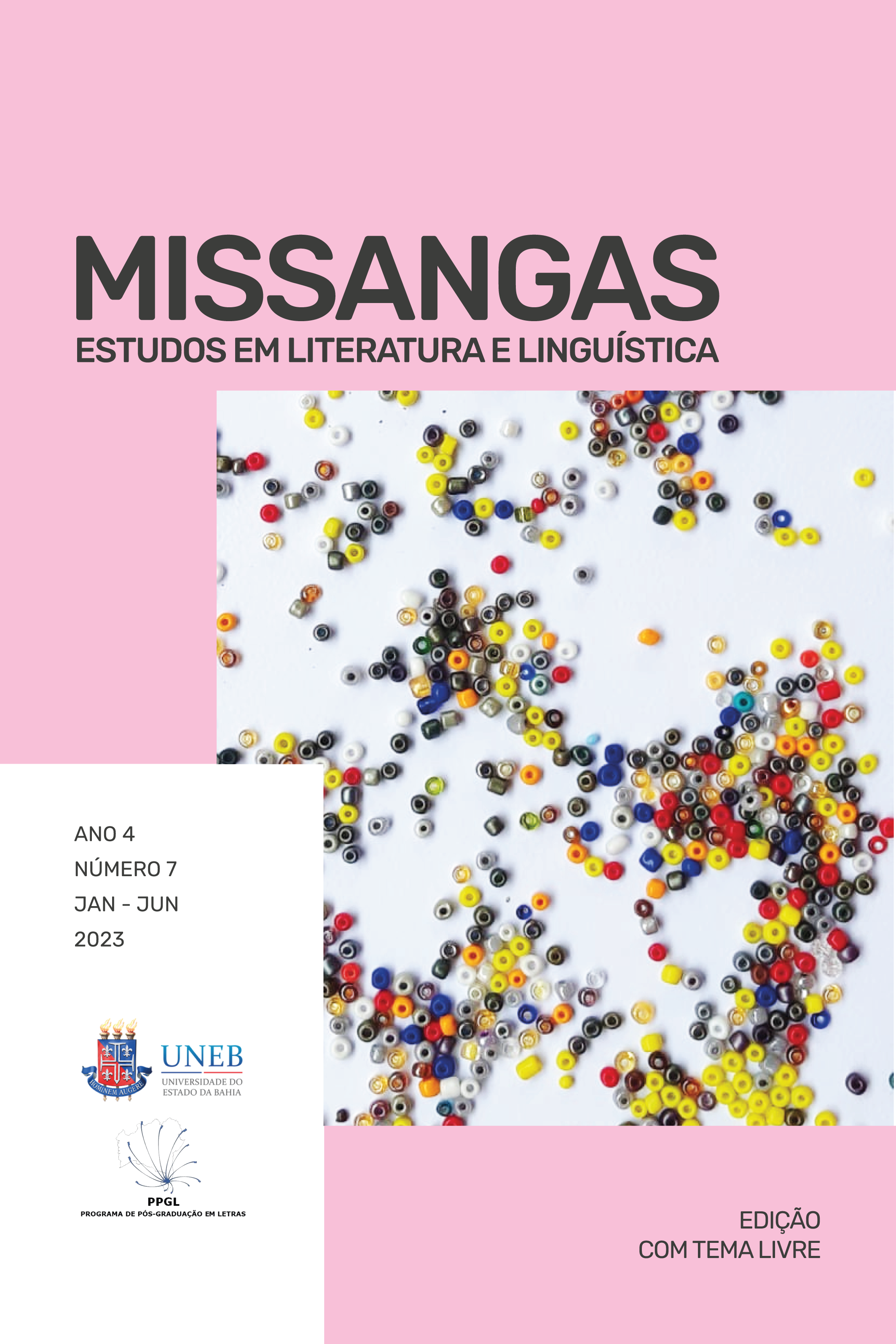"ONTEM EU NÃO SAIR": O GRAFEMA R FINAL EM VERBOS FLEXIONADOS COMO MARCADOR DE TONICIDADE
"ONTEM EU NÃO SAIR": THE GRAPHEME R IN FLEXED VERBS’ FINAL POSITION AS A MARKER OF TONICITY
DOI:
https://doi.org/10.53500/missangas.v3i7.16999Keywords:
Ortografia; grafema R; hipercorreção; tonicidade.Abstract
A recurrent orthographic phenomenon has been observed recently in Brazilian Portuguese: the occurrence of the grapheme R in final position of written flexed verbs (where there is no R in regular orthography nor in pronunciation). The present work aims at presenting the hypothesis that the occurrence of a final R in flexed verbs is not a case of hypercorrection, as it has been argued in the literature. In order to do so, we collected data by means of a controlled experiment carried out online in social media. It is our understanding that the final R in flexed verbs is being used as a diacritic marker of tonicity, such as graphic accents in Portuguese (´and ` for example). The grapheme R in flexed verbs occurs preferably in short oxytones (one or two syllables) and is produced generally by people above 25 years old that do not hold University education. The phenomenon seems to be related to a phonological perception of tonicity marked with that grapheme. It is often seen with oxytone words of different grammatical classes other than verbs, such as in the written words olar, vocer, sofar and cafer.
Downloads
References
BORTONE, M. E.; ALVES, S. B. O fenômeno da hipercorreção. In: BORTONI-RICARDO, S. M. et al (Orgs.). Por que a escola não ensina gramática assim? São Paulo: Parábola, 2014.
CALLOU, D; MORAIS, J.; LEITE, Y. Apagamento do R final no dialeto carioca: um estudo em tempo aparente e em tempo real. DELTA [online]. v. 14, n. spe, 1998. Disponível em < https://revistas.pucsp.br/index.php/delta/article/view/43392>
CALVET, L-J. Sociolinguística: uma introdução crítica. São Paulo: Parábola, 2002.
CESAR, H. H. de F. Acréscimo do grafema /R/ em posição final de vocábulo: caso de hipercorreção. In: COELHO, F. A. C. et. al (Orgs.) Descrição e ensino de língua portuguesa: temas contemporâneos. Série Língua Portuguesa e Ensino. Volume 6. Rio de Janeiro: Dialogarts, 2018.
COSTA, G. B. O apagamento do rótico em coda silábica na escrita de estudantes catuenses. Letra Magna, v. 06, n. 10, 2009. Disponível em <https://ojs.ifsp.edu.br/index.php/magna/issue/view/147/199>
FERNANDES, V. dos S. Um novo fenômeno ortográfico na escrita digital: o grafema r final em verbos flexionados. Trabalho de Conclusão de Curso, Bacharelado em Humanidades, UFVJM. Diamantina, 2016.
HOUAISS, A. Sobre alguns aspectos da recuperação fonética. In: SIMPÓSIO DE FILOLOGIA ROMÂNICA, 1., 1958, Rio de Janeiro. Anais. Rio de Janeiro: MEC, 1970.
LABOV, W. A hipercorreção pela classe média baixa como fator de mudança linguística. In: _____. Padrões sociolinguísticos. São Paulo: Parábola, 2008.
TORRES, P. F de J., OLIVEIRA, J. M. de. O apagamento do -R no final de vocábulos em produções escolares na cidade de Feira de Santana - BA. Cadernos do CNLF, vol. XIX, n. 01, 2015.
Downloads
Published
Issue
Section
License
Os artigos publicados na revista Missangas são de inteira responsabilidade de seus autores e não refletem, necessariamente, o pensamento dos editores.


